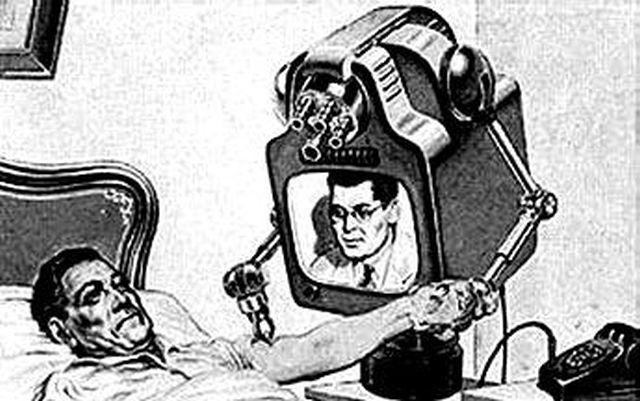Teledoctors: Bridging the Void In Between Individuals and Doctor
The emergence of teledoctors represents a significant shift in the medical care landscape, using options to enduring ease of access issues encountered by people and carriers alike. By incorporating telemedicine into standard methods, healthcare systems can get to underserved and remote populations, providing essential clinical assessments without the obstacles of range and traveling. This standard shift not just enhances individual involvement but also maximizes source allotment for service providers. Nonetheless, the extensive fostering of teledoctors raises vital concerns concerning the sustainability of such practices and the effects for future medical care shipment. What obstacles lie in advance in ensuring this design's performance and equity?
Rise of Telemedicine

The rise of telemedicine is also sustained by the demand for economical health care. Health care systems worldwide are under stress to minimize costs while preserving quality care, and telemedicine provides a viable solution. By decreasing the demand for physical brows through, telemedicine lowers above expenses for healthcare centers and eventually lowers the economic problem on clients.
Additionally, the COVID-19 pandemic worked as a driver, accelerating the fostering of telemedicine methods. Social distancing measures and the demand to reduce direct exposure danger necessitated a change towards remote appointments, triggering regulatory bodies to support and adjust telehealth services. This change has not only tested telemedicine's efficacy yet likewise its possible to progress as a staple component of contemporary healthcare systems.
Benefits for People
As telemedicine proceeds to improve healthcare distribution, clients stand to obtain considerably from this transformation. Mainly, telemedicine boosts availability, permitting clients in underserved or remote areas to consult doctor without the demand for extensive travel. This is specifically beneficial for individuals with flexibility issues or those living in rural areas where healthcare centers could be limited. Telemedicine also provides individuals the ease of receiving medical recommendations and therapy from the convenience of their homes, minimizing the moment and expense associated with traveling to a health care facility.
Furthermore, telemedicine supports continuity of treatment by promoting normal follow-ups and surveillance, which are critical for taking care of chronic conditions. Patients can easily set up visits and gain access to healthcare services outside conventional office hours, suiting their hectic way of lives. This flexibility leads to boosted individual interaction and adherence to treatment strategies, potentially leading to better wellness results.
Additionally, telemedicine can aid minimize the threat of infection transmission, an issue heightened by the COVID-19 pandemic. By decreasing the requirement for in-person gos to, people can stay clear of crowded waiting areas and minimize exposure to contagious health problems. Ultimately, telemedicine encourages clients by providing timely, reliable, and individualized healthcare solutions.
Advantages for Providers
For medical care service providers, telemedicine supplies considerable benefits that improve the performance and reach of their practice. By leveraging electronic technology, providers can prolong their solutions to a broader market, consisting of those in remote or underserved locations. This not only relieves geographical barriers however also optimizes individual retention and procurement by making healthcare more available.
One more trick benefit is the reduction in overhanging costs. With telemedicine, the requirement for physical room lessens, allowing carriers to minimize realty and functional expenditures. Furthermore, telemedicine helps with better time administration by lowering the demand for enabling and commuting for even more adaptable scheduling. This flexibility can cause raised patient examinations daily, therefore boosting revenue potential.
Telemedicine likewise promotes a much more collective atmosphere for doctor. teledoctors. It allows seamless sharing of patient information amongst professionals, boosting analysis accuracy and treatment outcomes. In addition, digital platforms can incorporate with digital health and wellness records (EHRs), improving data precision and streamlining administrative jobs
In addition, telemedicine enhances patient contentment, which is essential for copyright credibility and success. By using practical and timely care, carriers can improve person commitment and involvement, even more reinforcing the provider-patient partnership.
Overcoming Challenges
While telemedicine provides various benefits for medical care companies, it also presents challenges that need my site cautious factor to consider. One significant challenge is making sure information privacy and security. As patient information is transmitted digitally, the danger of data violations boosts, necessitating durable cybersecurity measures. Medical care companies have to follow rigid regulations like HIPAA to secure sensitive info, consequently requiring investment in safe and secure platforms and recurring personnel training.
An additional obstacle is the digital divide, which can hinder access to telemedicine services. Not all patients have equal access to the required technology or web connection, particularly those in rural or underserved locations. This difference can aggravate existing health care inequalities, making it essential for carriers to check out alternative options, such as partnerships with neighborhood organizations, to connect this space.
Additionally, there are constraints in conducting physical exams from another location. Specific conditions need in-person analysis, highlighting the need for a hybrid design that integrates telemedicine with traditional sees. Providers should navigate these difficulties by creating procedures to identify when telemedicine is ideal and ensuring seamless changes in between digital and in-person treatment.
Future of Medical Care
The future of health care is positioned for a transformative advancement, driven by the quick integration of modern technology and technology. This not just improves person ease yet additionally broadens accessibility to healthcare, specifically in country and underserved areas.
Synthetic knowledge (AI) and equipment discovering are also readied to play essential functions. These modern technologies can examine vast amounts of data, giving anticipating understandings into patient health, boosting analysis accuracy, and personalizing treatment strategies. AI-driven devices can boost doctor' capacities, resulting in more educated decision-making and far better patient results.
Moreover, wearable technology and Net of Clinical Things (IoMT) gadgets are reinventing client interaction and positive health and wellness administration. These gadgets allow continuous health tracking, permitting very early discovery of timely treatments and prospective problems.
As these innovations remain to breakthrough, they guarantee to create an extra effective, obtainable, and patient-centric medical care system, inevitably bridging the gap in between individuals and medical care companies. - teledoctors
Final Thought
Medical care from this source companies profit from extra reliable time administration and enhanced collaboration opportunities. Despite difficulties such as regulative problems and technological barriers, the future of healthcare shows up effective and progressively inclusive due to the combination of telemedicine right into conventional treatment designs.

As telemedicine continues to improve medical care shipment, people stand to get significantly from this improvement. Largely, telemedicine enhances accessibility, allowing people in remote or underserved locations to seek advice from health care service providers without the demand for extensive traveling. Telemedicine additionally supplies patients the convenience of getting medical suggestions article source and therapy from the comfort of their homes, decreasing the time and cost linked with traveling to a health care facility.
Inevitably, telemedicine empowers people by offering prompt, efficient, and customized medical care services.
Comments on “Just How Teledoctors Are Changing Modern Health Care”